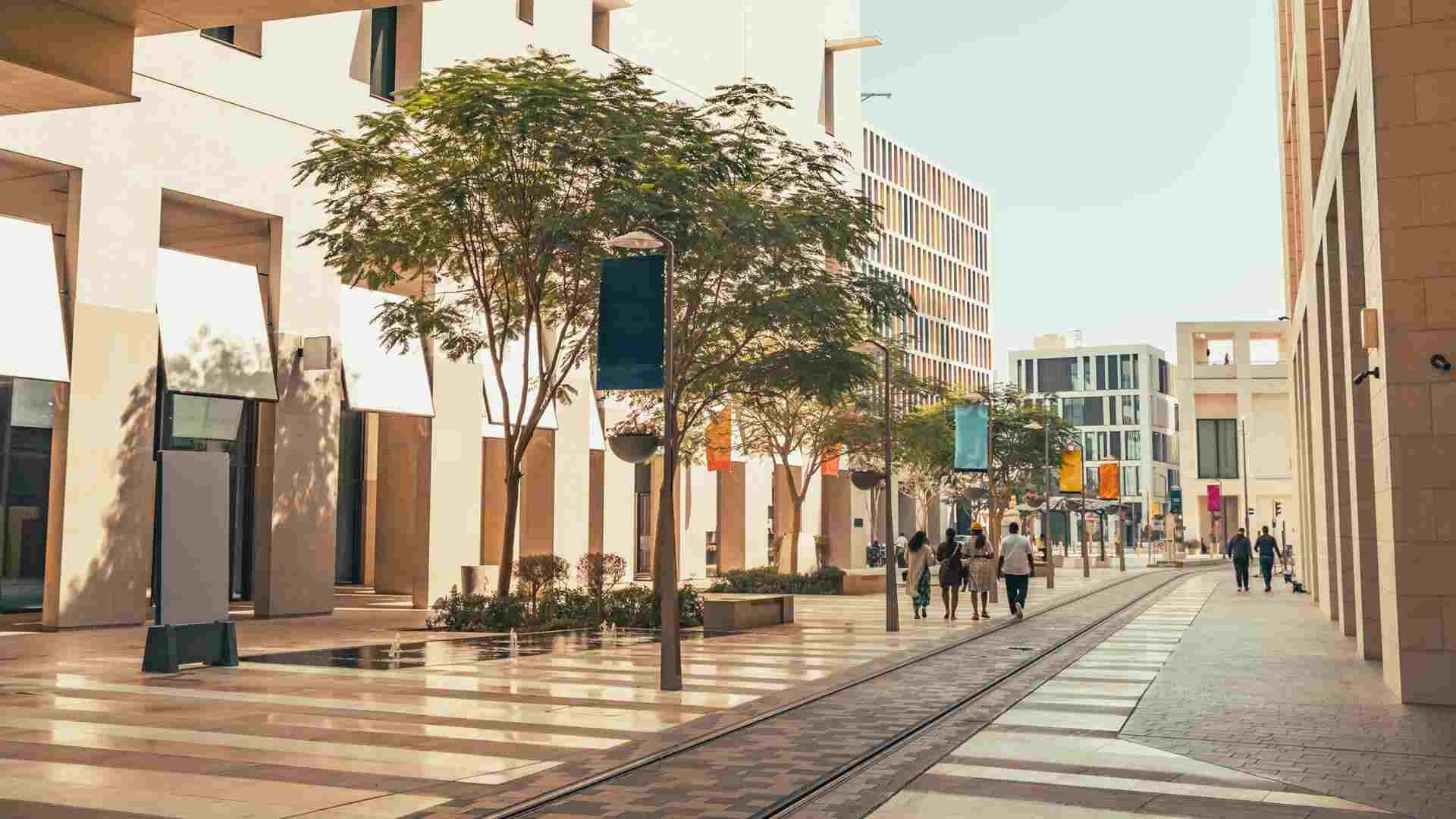- | 8:00 am
What the Middle East can tell us about surviving in a hotter, drier future
As a heat wave sweeps the U.S., cities should look to the Middle East for ways to adapt to a changing climate.

2023 was the hottest year on record, shattering records dating back to the mid-1850s, and driving a heightened sense of urgency around climate action. 2024 might be even hotter, as evidenced by this week’s extreme heat wave across the U.S.
In the Middle East, already one of the hottest regions on earth, temperatures have risen twice as fast as the global average. Characterized by arid environments, countries in this region have their own set of challenges and needs, necessitating a distinct framework for advancing sustainability policy and solutions. But they’re not alone. Over one-third of the world’s population lives in countries—such as vast areas of Western Asia, northwestern parts of the Indian subcontinent, and South America—with hot and arid environments.
To date, global sustainability discussions have largely focused on tropical and temperate countries. They usually assume that the main focus should be on preserving lush forests with abundant water supplies as seen in places like Brazil and Indonesia. However, hot and arid countries—many of which are energy-rich—don’t have the same ecosystems or similar natural resources. They’re often thought of as barren or empty, but the deserts are very much alive. At my organization, Earthna, a nonprofit policy research and advocacy center based in Qatar, we’re developing sustainability frameworks that are tailored to hot and arid climates—and can provide a blueprint for similar regions around the world.
RETHINKING WHAT IT MEANS TO BE BIODIVERSE
To create effective and implementable sustainability frameworks for hot and arid regions, it’s first critical to understand the challenges and opportunities faced by these natural environments. Let’s take biodiversity in Qatar, for example. Our research work in countries with extreme temperatures recognizes that despite the harsh conditions—including the lack of water and intense heat—arid ecosystems have produced resilient flora and fauna, which have been forced to adapt in unique and novel ways. Desert animals like the oryx have developed the innate ability to conserve energy and survive when land is dry and food is scarce, and most plants in the desert don’t require a lot of water to thrive.
Mangrove trees, which have special adaptations to take in extra carbon dioxide and to remove salt, have adapted to tolerate conditions that would kill most plants. These coastal trees stabilize the shoreline, preserve beaches from erosion, and can protect against rising sea levels. They improve the conditions for the development of fisheries and are able to absorb and store more carbon dioxide than most plants, helping in the fight against climate change.
BUILDING MORE RESILIENT CITIES
As we think about the future of our cities—and what they need to prosper in sustainable ways—it’s important to remember that civilizations have lived in hot and arid climates for thousands of years and have developed unique social and cultural behaviors to adapt in their environments. Traditional ancestral knowledge provides a rich source of understanding about the natural world that must be leveraged to inform modern approaches to sustainability.
In Qatar’s capital city of Doha, where the country’s energy demand is highest, developers are integrating sustainable design principles that harmonize ancient practices and modern architecture to offset heat and reduce the city’s carbon footprint. Msheireb Downtown Doha is one such example. A historic city district that was revitalized over a 12-year period, it features traditional architectural elements, such as the malqaf, a high parapet used to create cross ventilation and passive cooling, and mashrabiya (decorative lattices) that provide shade and privacy, resulting in a 30% reduction in energy consumption. An advanced waste collection system means that most of the district’s waste is recycled or reused, and irrigation systems reduce water usage. Architects have upheld the district as a blueprint for sustainable urban regeneration.
In Oman, the ancient Aflaj irrigation system has operated for more than 2,000 years. Water is divided among users through a complex set of channels that are communally maintained, making water management fairer and more effective, which helped it gain recognition as a UNESCO World Heritage Site. At one of the irrigation sites, Falaj Al Jeela, water is used for agricultural as well as civic purposes; the water from these sites provides 30%-50% of all the water used in Oman today.
Cities in hot and arid regions clearly face very different challenges to those in more temperate climates. However, throughout history, these cities have adapted and innovated to thrive, despite the harsh conditions. The sustainability frameworks we’re working on not only consider and account for extreme temperatures and dry environments, they’re tailored to include both ancient and modern solutions that can benefit today’s cities.
ACCELERATING SOLUTIONS THAT CAN BE USED ACROSS GEOGRAPHIES
There are indeed ways to promote sustainability in the hottest and driest climates, despite the challenges, especially when done in partnership with core stakeholder groups, including technical experts, academics, government and NGOs, businesses, and civil society. Earthna is looking to establish an Arid Cities Network that will bring together experts from cities with hot and arid environments, and we’re currently leading a global sustainability assessment with a focus on six arid cities (Doha, Muscat, Jaipur, Marrakech, Grenada, and Lima). Much like the establishment of chief heat officers in the U.S., we will share best practices and develop practical policy-based solutions to tackle the impact of climate change in our regions.
Hot and arid climates have a major role to play in reducing the harmful effects of climate change, no matter their location. This region holds a rich reservoir of both traditional knowledge and forward-thinking innovation for charting a course towards a more sustainable future.






































